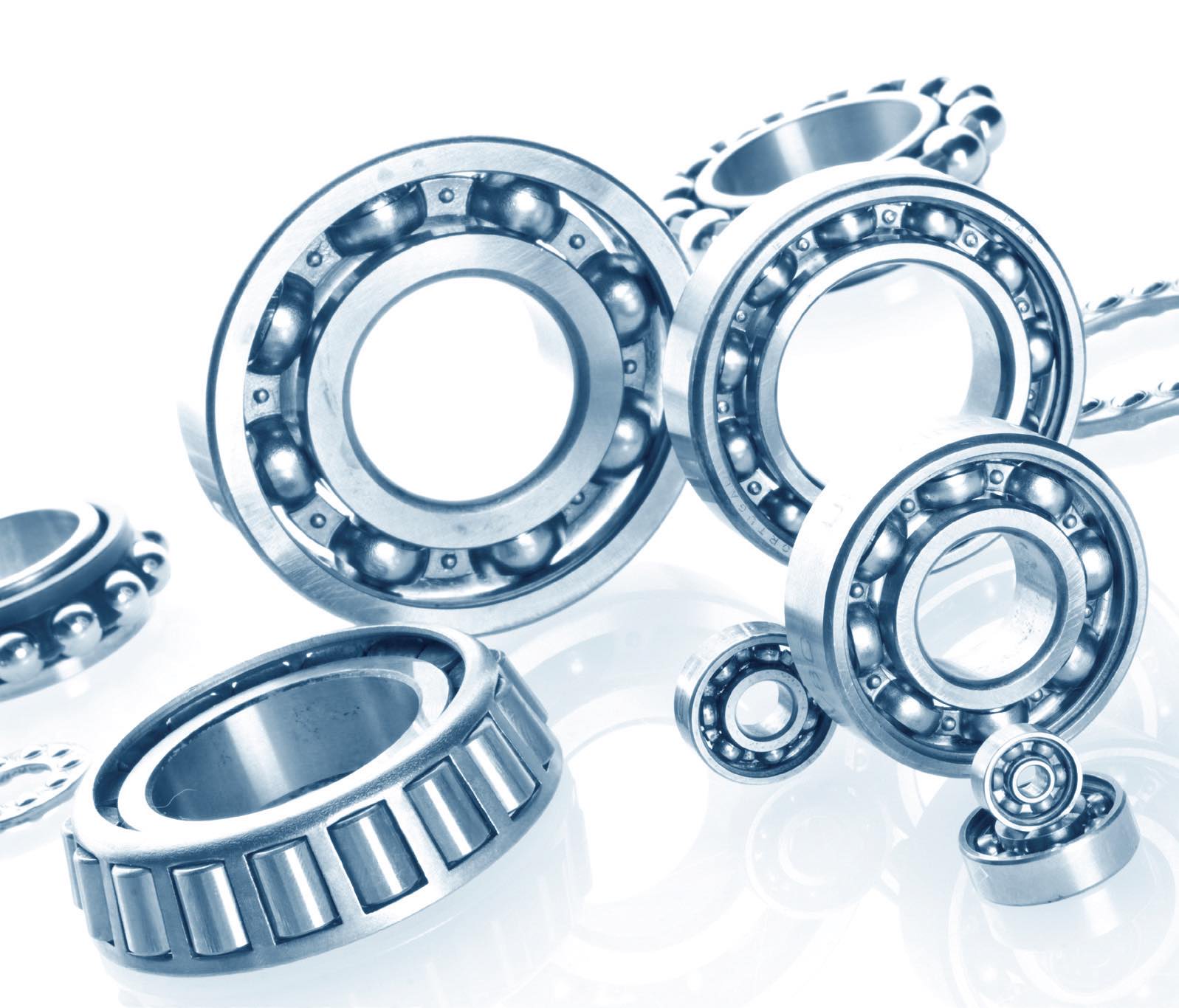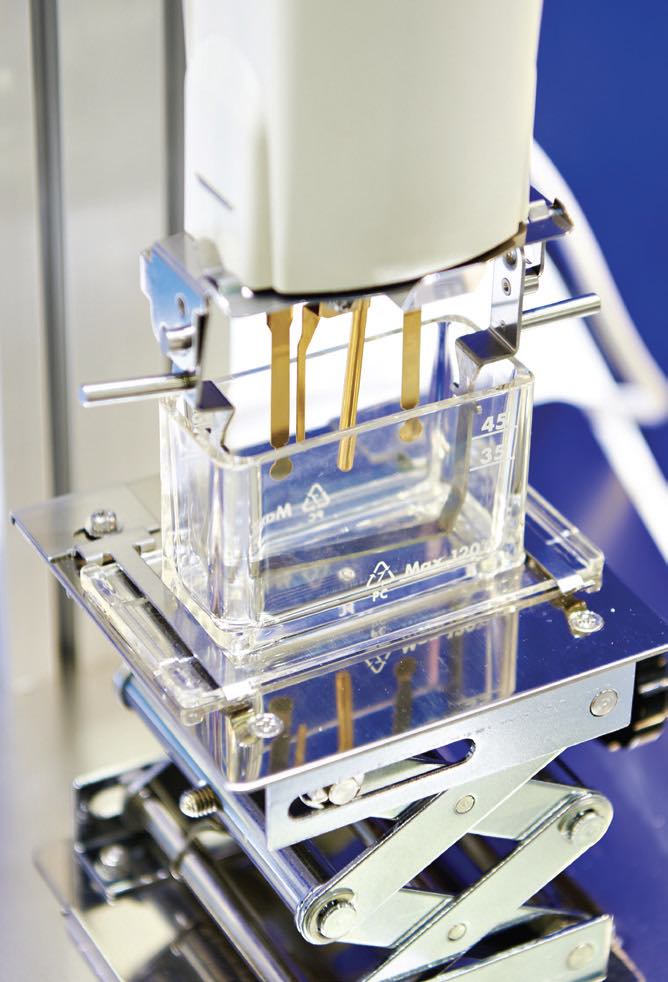Executive Summary
TLT readers work in many diverse settings and, as a result, use many different types of bearings. Some stick with well-known types such as roller bearings or journal bearings, while others are using newer designs like ceramic bearings. New developments in coatings and solid lubricants have increased the efficiency of classic bearing types. Test methods also vary, with some readers reporting that they use proprietary testing, others utilizing third-party testing services and a majority listing popular methods such as FE8 and four-ball test.
Q.1 What kind of bearings do you work with lately that have new designs or improved performance?
Ceramic, graphite filled, poly filled and linear rail.
Hybrid ceramic bearings.
High speed ball bearings, low friction tapered roller bearings and high performance wind turbine main bearings.
Ball bearing, the usual ones.
Design auto lube system for crusher, mobile equipment in mining and construction.
Fully ceramic bearings.
Rolling contact bearing.
Refined thrust bearing spring bed designs and fluid pivot journal bearing for misalignment accommodation.
Solid dry film lubricant and journal bearings.
No new designs—most of the bearings that I have worked with lately were regular roller bearings, similar to wheel bearing. They are grease lubricated. I use a calcium sulfate grease with an ISO viscosity of 220.
Oil bearing, gas bearing and magnetic bearing.
Journal—old design, reliable performance.

Plain bearings with reciprocating rotary motion that had solid lubricating coatings on the tribo-polymer-forming basis, fabric made coatings, polytetrafluoroethylene (PTFE) + bronze compounds and self-lubricating materials. The best combinations for extreme operating conditions were solid lubricating coatings on the tribo-polymer-forming basis and fabric made coatings.
Ball and roller bearings.
What kind of bearings do you work with most often?
Sliding contact bearings: journal bearings, thrust bearings or collar bearings
27%
Rolling contact bearings: ball bearings or roller bearings
73%
Based on an informal poll sent to 15,000 TLT readers.
Tapered roller bearings and spherical roller bearings.
Thrust bearing pads and journal bearings.
Hydrodynamic journal bearing (it is high load and low speed).
Hybrid bearings with ceramic balls and polyamide cages.
Journal bearings and roller bearings.
Rolling element bearings where we have seen improvements in raceway, cage and element advances for the given applications.
Ball bearings including deep groove, angular contact and four-point contact, and roller bearings including cylindrical, spherical and tapered roller. Many of these bearings have improvements in race geometry and rolling element geometry, raceway and rolling element materials and treatments, cage geometries and materials.
Rolling bearings.
Roller bearings, ball bearings and thrust bearings.
Radial bearings—maintenance-free with various sliding contact surface combinations.
Roller bearings.
Ball bearings for aerospace and medical applications.
All types.
System of rolling ball bearings with the axial clearance compensation by means of wave springs.
Angular contact ball bearings.
Rolling element. The major improvements appear to be coatings that help resist corrosion.
We mostly use plain bearings. To my knowledge there have not been recent performance improvements, but they have so many materials it is difficult/impossible to keep track of.
I have not used any bearings that have new designs.
Hybrid bearings.
Grooves type and rolling type, peak and valley type.
Q.2 What kind of testing machines do you use lately for bearing friction and wear testing?
Handheld FTIR spectrometer, particle counter and grease analyzer.
SRV and FE9.
Dedicated friction test rigs—wear is generally not an issue for rolling bearings.
WAM and FE8.
Vibration, alignment and visual check of grease.
Ball-on-disk tribometer.
None, other than our lab viscometer.
Computational modeling, simulation and tribo-physics exploration.
Most of the bearings that we work on are non-critical. The inspection procedure is to remove clean and visually inspect for corrosion, wear and damage.
Turboexpander.
What kind of lubricant do you use for your bearings?
Oil
24%
Grease
41%
Solid lubricant
4%
Combined two or more formats of lubrication
31%
Based on an informal poll sent to 15,000 TLT readers.
Vibe monitoring, bearing metal temperature and bearing oil temperature (on some).
Special test machine having the ability to perform testing of plain bearings with various oscillating characters of sliding.
FE8 and four-ball.
FE8 test rig.
Four-ball test.

We test greases and oils in the FE8 bearing test (angular contact, tapered roller and cylindrical rollers) and grease in the FE9 in angular contact bearings. We also do grease testing in other tapered roller tests such as the KRL. Also we use the ASTM D3336 Pope test with deep groove ball bearings. Other standardized ASTM tests use tapered roller and deep groove ball bearings.
We do not perform our own testing on bearings. Testing is usually performed by the vender or an outside laboratory.
FAG, FE9 and FE8, SRV (linear oscillation test machine) and four-ball test machine.
Four-ball machine (antiwear and extreme pressure [EP] performance).
We use some commercial testers for friction torque and an own-developed combined friction and lifetime bearing test rig. In addition we use model testers like pin-on-disk or ball-on-disk testers at external labs.
Many, several types of machines.
R0F+.
Tribotesters of the ball-on-disk type and of the ball-on-ring with bearing outer race type (partner and counter-partner made from materials of the bearing components) under conditions of lack of lubrication or of lubrication by various oil and greases.
Standard bearing testers of fully assembled bearings, thrust ball and roller bearing testers under marginal lubrication conditions, three-ball on rod and oscillating wear tester.
We test an entire product assembly using a test protocol which imitates actual use. These are prosthetic component industry specific tests. We do not utilize standard friction and wear tests.
FE8 and FE9 test rigs. High speed test rig, false-brinelling test rigs (SNR-FEB2 and Fafnir tester).
Mini traction machine (MTM).
Impact type and sliding type.
Editor’s Note: Sounding Board is based on an informal poll sent to 15,000 TLT readers. Views expressed are those of the respondents and do not reflect the opinions of the Society of Tribologists and Lubrication Engineers. STLE does not vouch for the technical accuracy of opinions expressed in Sounding Board, nor does inclusion of a comment represent an endorsement of the technology by STLE.